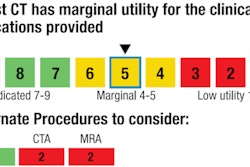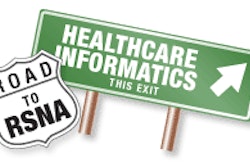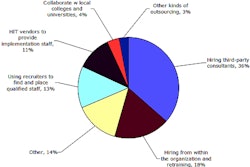CHICAGO - The conventional means of notifying a patient's physician of critical and/or unexpected results is often time-consuming, inefficient, and repetitive, while at the same time requiring detailed, accurate documentation.
Quantifying this lost time could provide crucial support for the purchase of an automated results notification system -- but how can this be done?
In a scientific poster presentation on Tuesday, Ramin Javan, MD, explained how an application from Baptist Memorial Hospital in Memphis, TN, can help, providing value to any sized hospital or radiology practice.
A RIS/PACS/IT team at the hospital has created a robust, standalone stopwatch application that documents the time spent by its radiologists to deliver critical and unexpected imaging results to ordering physicians. It also generates detailed documentation of notification efforts and data are retained in a format that facilitates analysis.
From the perspective of radiologists in the U.S., the importance of communicating critical results relates both to the timeliness and quality of patient care and the need to protect oneself and one's healthcare organization from a medical malpractice lawsuit. It is estimated that up to 80% of all malpractice lawsuits include an element of failure to communicate. Failure by interpreting radiologists to communicate critical results of an imaging exam is cited by the American College of Radiology (ACR) as the fourth most frequent reason they get sued, according to Javan and colleagues.
Though diligent radiologists note in radiology reports the efforts they made to contact ordering physicians and may also note the times and means by which contact attempts were made, quantitative data are seldom recorded. In many radiology departments, telephoning and paging the physician ordering the exam is the predominant or exclusive method utilized.
But the stopwatch developers do not believe that many radiology departments record the actual amount of time spent by the radiologist or by designated radiology staff. The precise time when the contact is made may not be recorded, nor the actual amount of time spent in conversation. Similarly, if a physician is paged, the initial paging attempt may be recorded, but the interlude before the physician responds to a page is seldom logged.
Use of the stopwatch application can record and quantify this information. The developers recommend using a wireless keypad or a wireless mouse/number pad sharing a single USB connector to interface with the application's data entry page.
At Baptist Memorial Hospital, the entry page contains patient demographic data and the accession number of the exam. It has radio-button and pull-down menu selections for the modality used, anatomical regions, radiology department sections by specialty, and names of radiologists. The type and urgency of the exam findings are also listed, along with other reasons for initiating the telephone call or page, and information fields regarding the physician(s) to be contacted.
The "enter" key is used to activate and to stop the "stopwatch." The time spent making multiple telephone calls can be recorded, as well as the time a physician returned a call and the amount of time spent discussing the case. Physician page response times are similarly recorded.
The stopwatch program uses a standalone, PC-based application programmed in Microsoft Visual Basic 6.0 that is capable of exporting the recorded data in a text file importable to Microsoft Excel. The text files provide a dependable database that can be backed up, analyzed, merged, and stored.
Although getting radiologists and designated radiology staff to use the stopwatch could be problematic, it is easy to use. The quantifiable data it records may help justify adding automated results notification systems to the electronic healthcare IT and imaging informatics arsenal that has become essential to radiology departments today.
By Cynthia E. Keen
AuntMinnie.com staff writer
December 2, 2010
Related Reading
Critical results reporting process improved in Ky., November 18, 2010
What clinicians want in a critical results reporting system, November 18, 2010
Some critical alerts for imaging tests are ignored, study shows, September 28, 2009
Automated e-mails reinforce radiology reports for important findings, August 26, 2009
Critical results reporting -- it's cheaper than settling lawsuits, June 5, 2009
Copyright © 2010 AuntMinnie.com



















